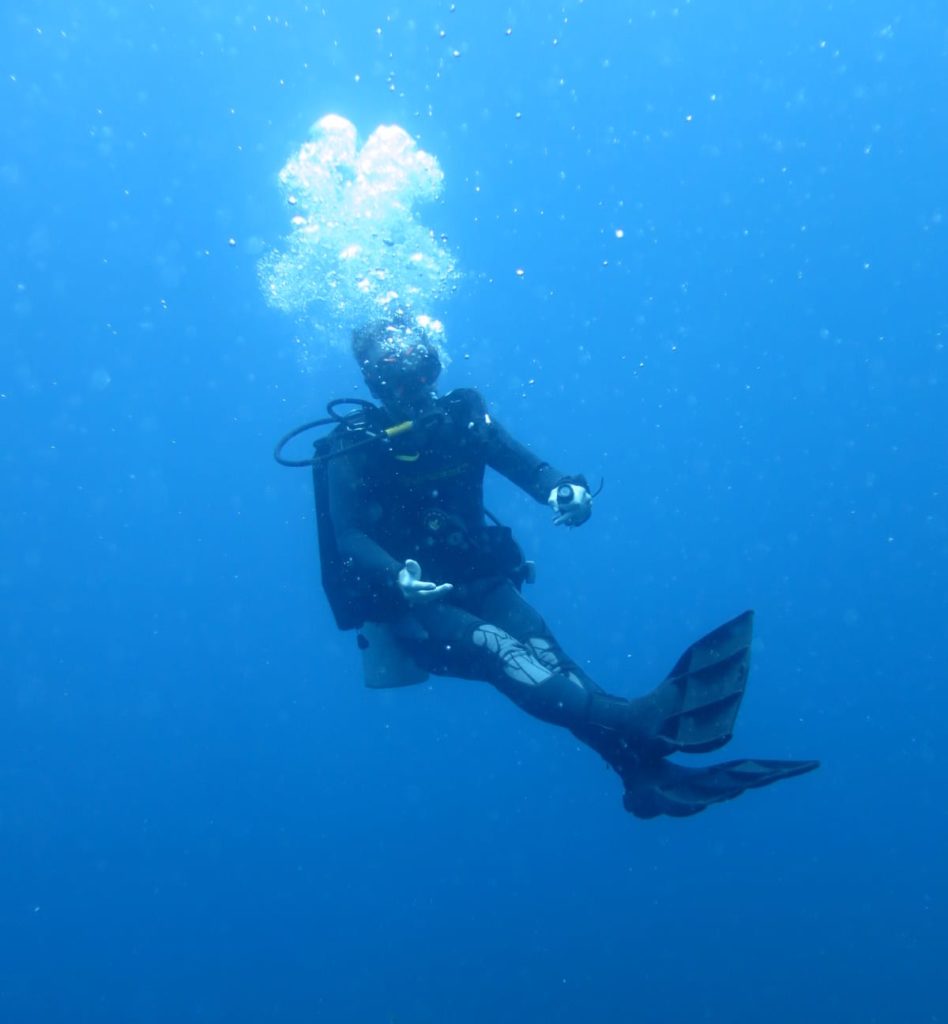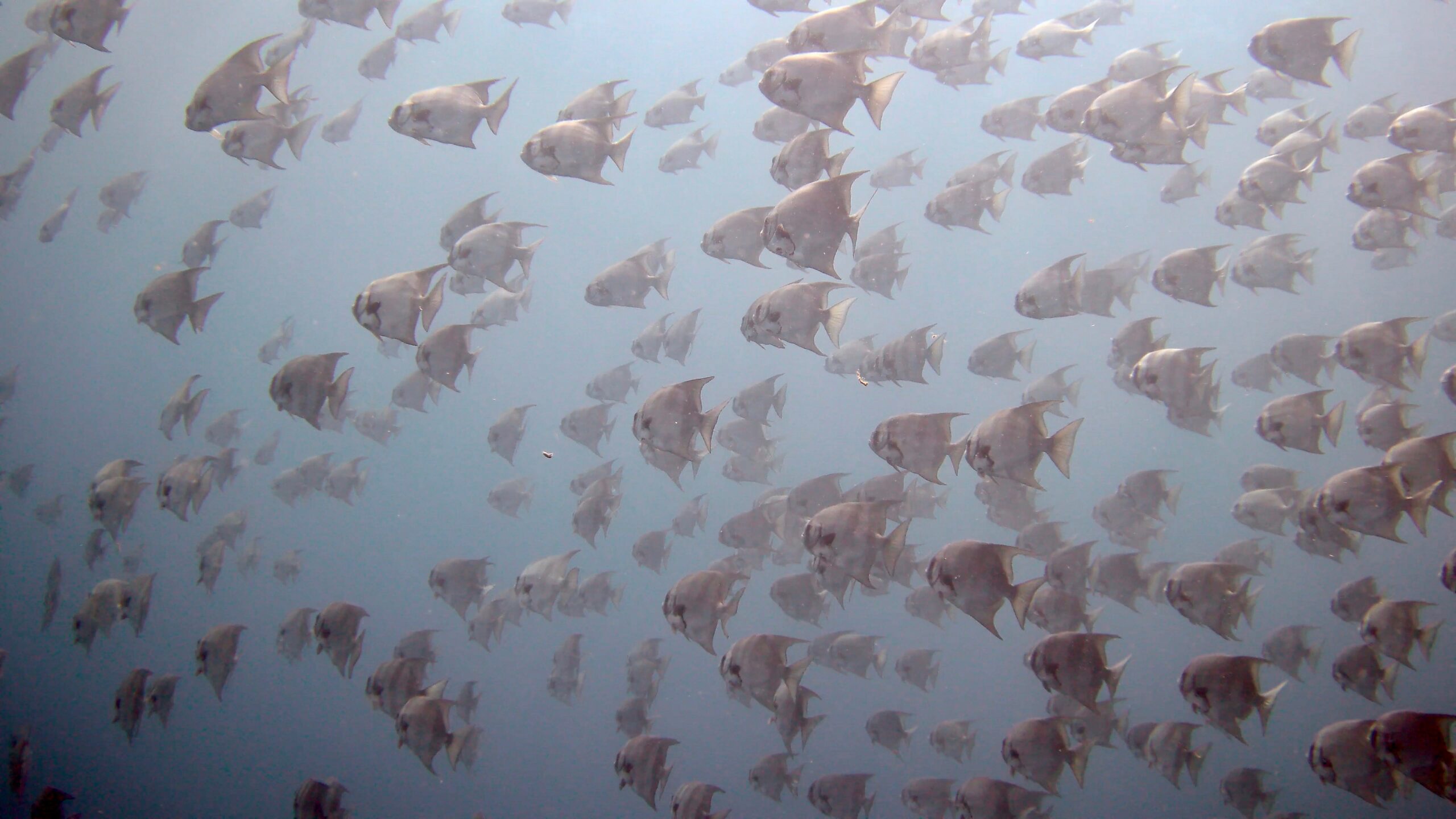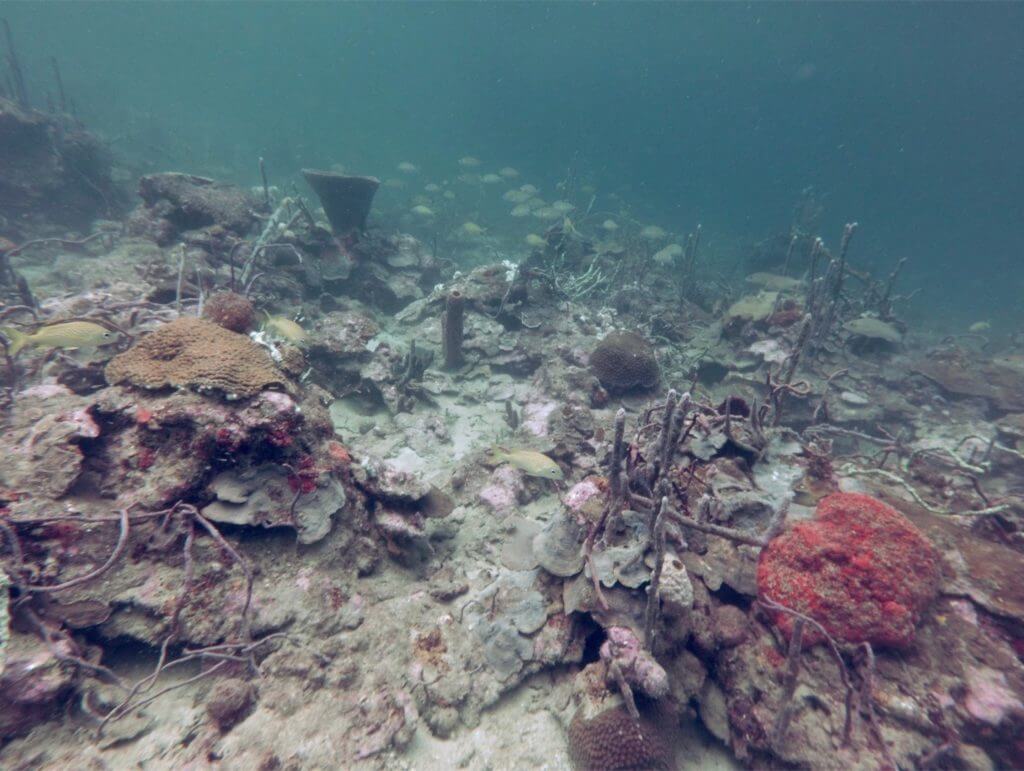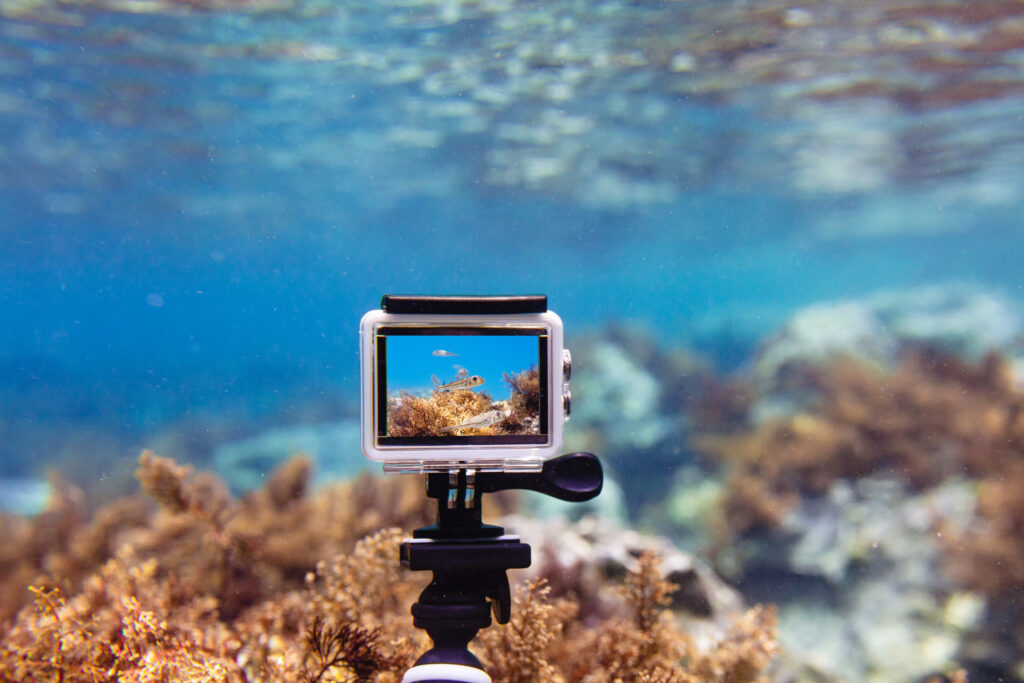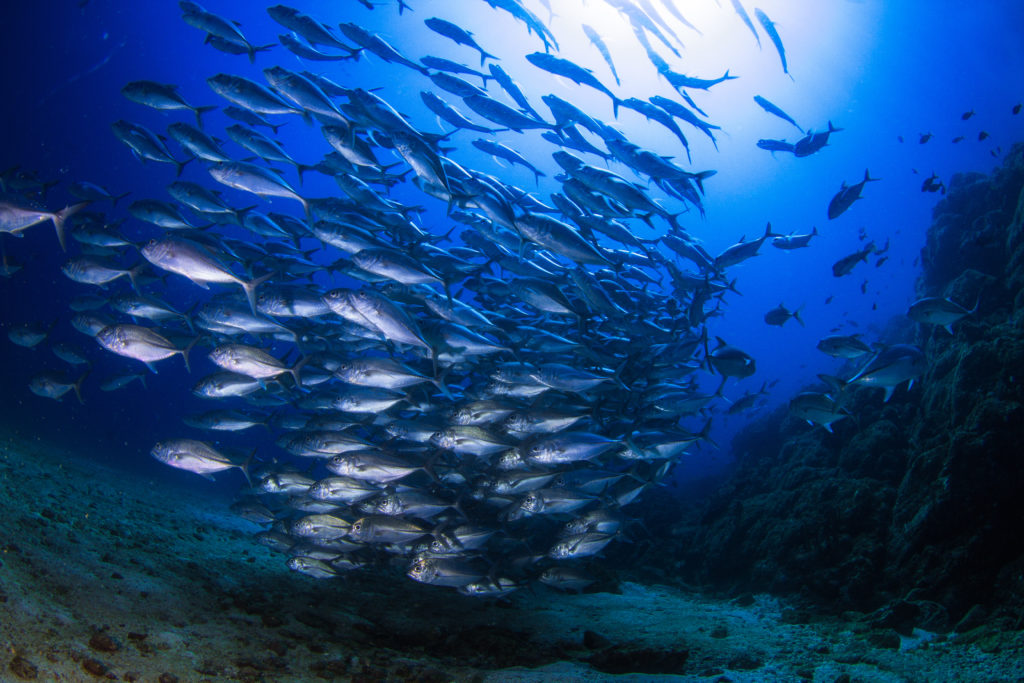
Located off Panama’s Pacific Coast in the Gulf of Chiriqui, Coiba Marine Park comprises the islands and surrounding waters of Coiba island, plus 38 smaller islands.
It is a wild and remote area of thick mangroves, tropical forests, sandy beaches and deep waters with extensive coral reefs.
Coiba island was used as a prison until 2004 so human activity in the area has always been low.
This, combined with the Gulf of Chiriqui’s capacity to buffer against the effects of El Nino temperature swings and the park’s special protection has resulted in a rich marine ecosystem there.
Consequently, the marine biodiversity is next level! Divers can see an abundance of sharks, rays and turtles plus huge schools of fish and even whales at the right time of year.
In April 2022, I went on a special 2 night trip to explore the most remote dive sites of Coiba Marine Park in search of great hammerhead sharks, southern stingrays and huge schools of fish.
In this report, I’ll detail my experience scuba diving at Coiba Marine Park whilst telling you all you need to know to discover it yourself.
In my opinion Coiba offers the best diving in Panama!
In April 2022, I travelled to the small beachside town of Santa Catalina on the Pacific Coast of Veregaus, Panama.
Once a sleepy fishing village, Santa Catalina now has a rapidly growing backpacker scene thanks to both it’s popularity as a surf destination and it’s proximity to…Coiba Marine Park!
Although it’s possible to make day trips to Coiba Marine Park from Santa Catalina; the distance between the two means you can’t reach Coiba Marine Park’s most remote, north dive sites.
For this reason, I’d signed up to embark on a 2 night trip with basic lodging at the tiny village of Pixvae, which lies around 30 miles further up the coastline from Santa Catalina and closer to the northern region of Coiba Marine Park.
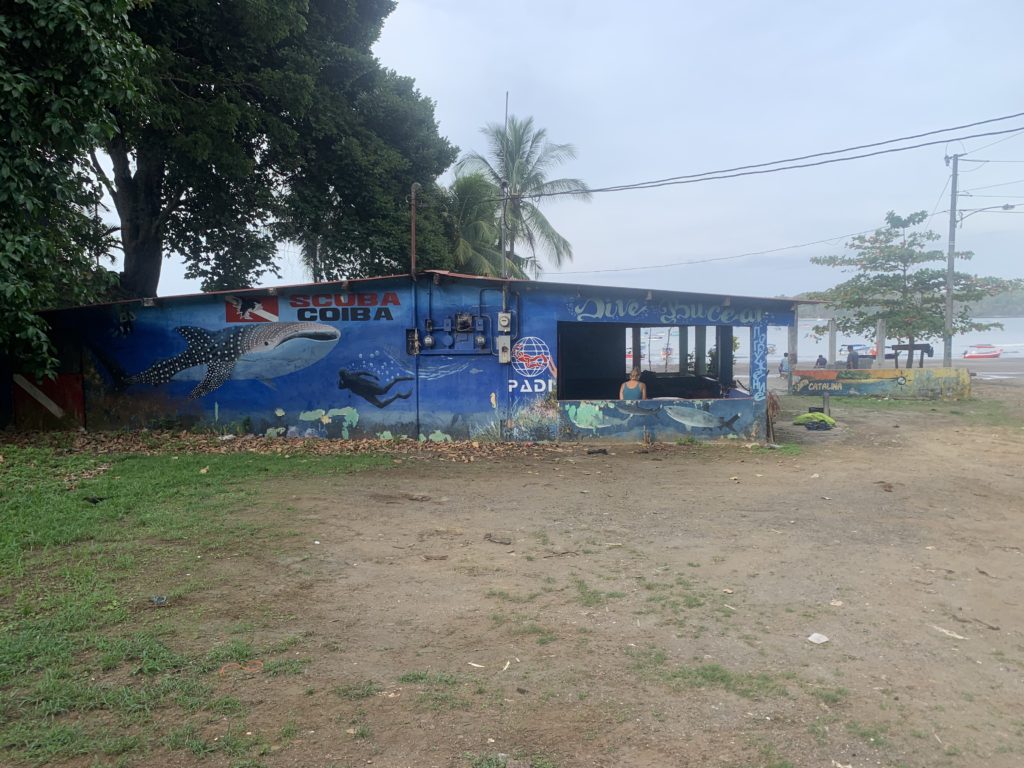
The only dive centre that I could find to offer such a trip was Scuba Coiba, whom are based in Santa Catalina, where I met them the evening before the trip.
The special trip covers diving, transport, food and accommodation throughout the three day and two night itinerary.
I had already reserved my spot and paid online, which was easy to do using the website WeTravel.
You can click on the link above to go straight through to the booking page or keep reading for more information.
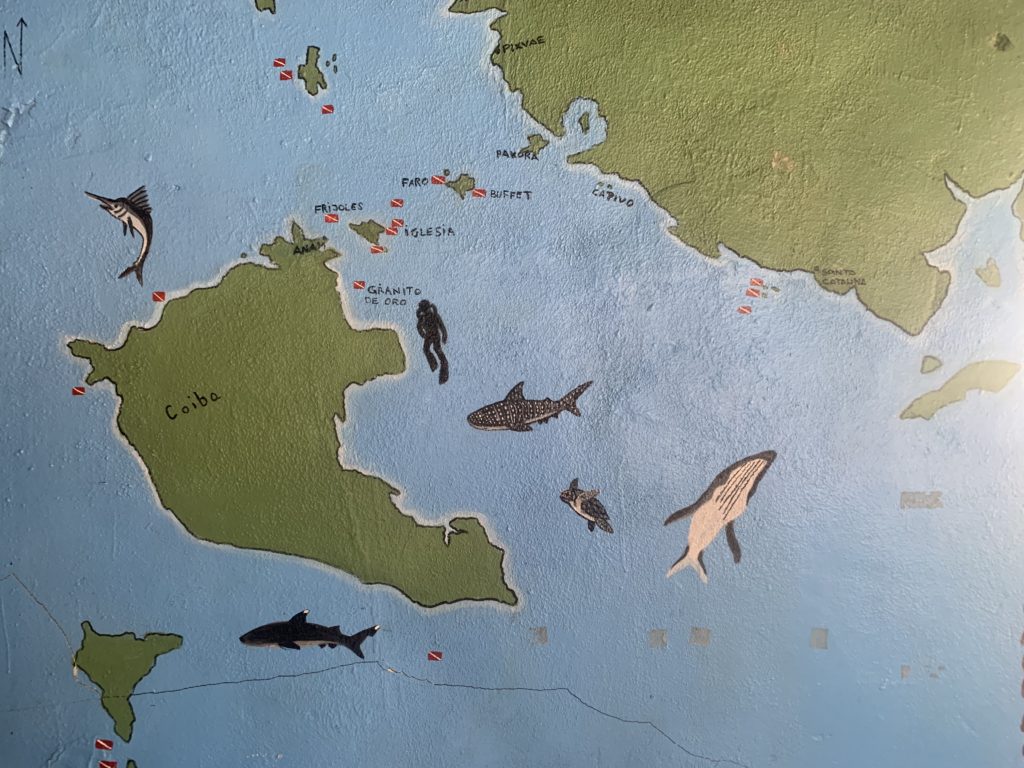
We departed from Santa Catalina for Pixvae by boat early the next morning.
Getting there took a couple of hours and along the way we stopped at two of Coiba Marine Park’s more southernly dive sites.
Here we saw many other divers, as this part of the Marine Park was still close enough to Santa Catalina to be reached on half day trips by people staying there.
However, despite the many dive boats, it didn’t feel crowded as there were many different dive sites for the various scuba diving operators to choose from.
The diving was easy and scenic; we stayed at around 32ft – 49ft (10 – 15m) and mainly saw colourful reef fish amidst some decent hard coral hiding various nudibranch and seahorses.
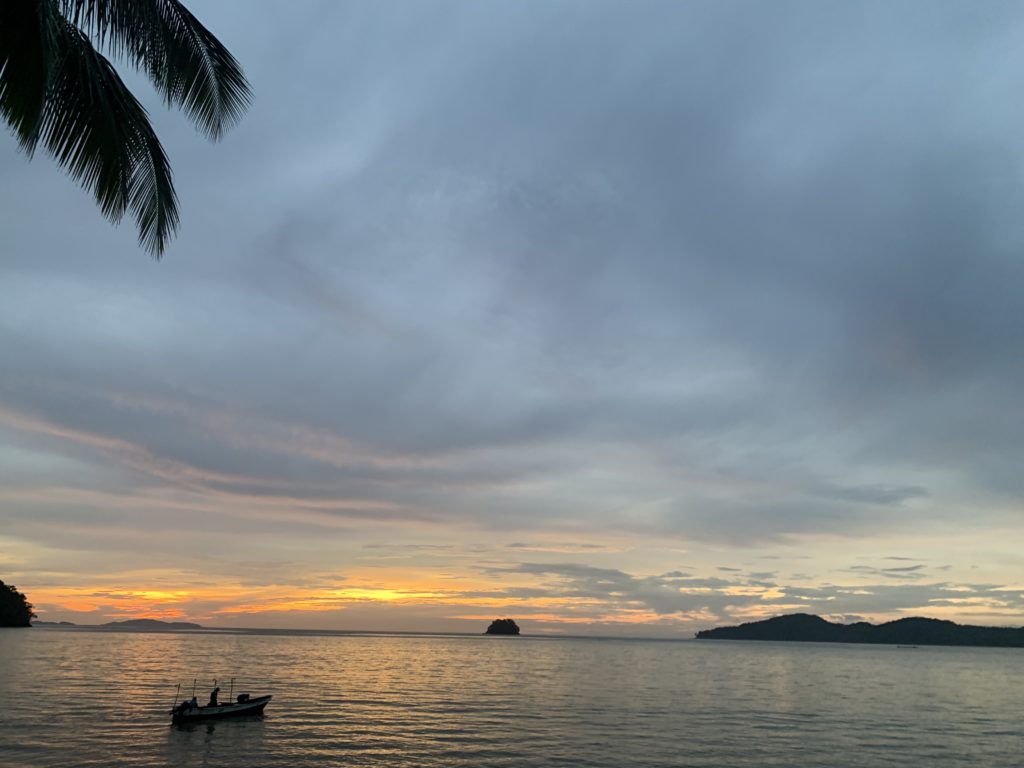
As late afternoon pulled in, the other dive boats turned and headed back to Santa Catalina but our continued northwards until we came to Pixvae.
Pixvae is a truly tiny fishing village with a local population of under 1000, limited power and WiFi and a total of 7 non-residents which was us (myself, the other guests and dive and boat staff).
It was a calm and fairly tranquil place, although even here reggaetone music had wormed it’s way into the community, being perpetually blasted from a couple of houses.
Nevertheless, the sunset views were spectacular and occasionally a frantic braying of beach dogs was almost loud enough to drown out the music.
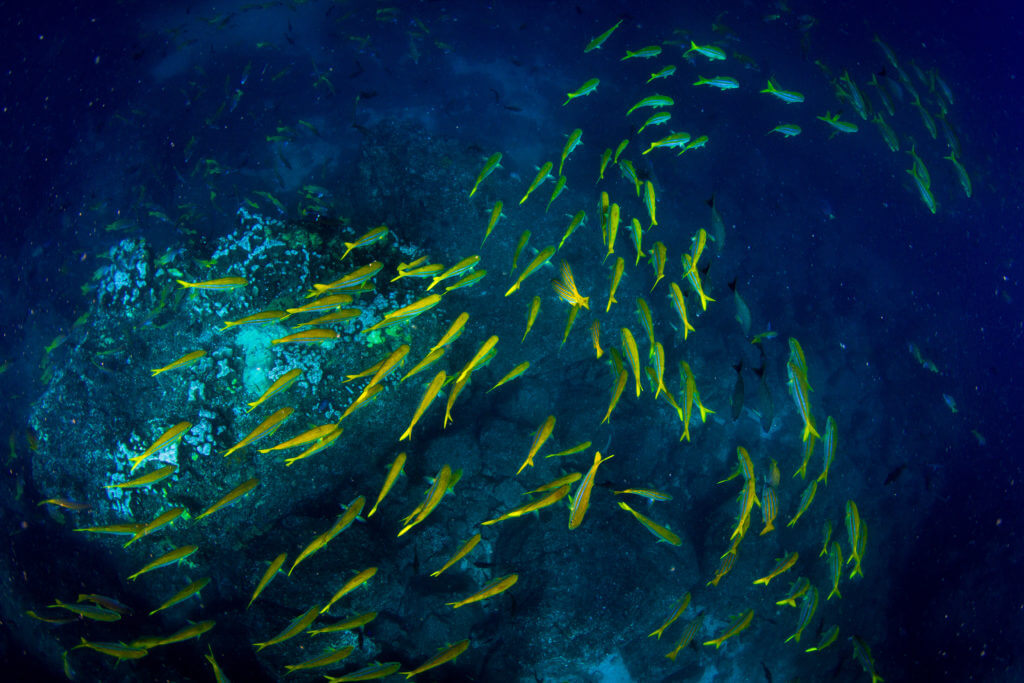
It was over the next two days that we got to discover the most remote northern regions of Coiba Marine Park, diving at sites where not a single other boat was to be seen.
At times the current was strong as we explored open waters, sometimes dropping down to 98ft / 30m where spectacular deep soft coral gardens of green and yellow grew.
At shallower depths, there was plenty of hard coral reef, forming several impressive pinnacles, however the main stars of the show were the large pelagic animals.
I’d never seen such vast schools of big fish before, with huge numbers of big eyed trevalley, yellowtail snapper and batfish as well as various other species that I couldn’t ID.
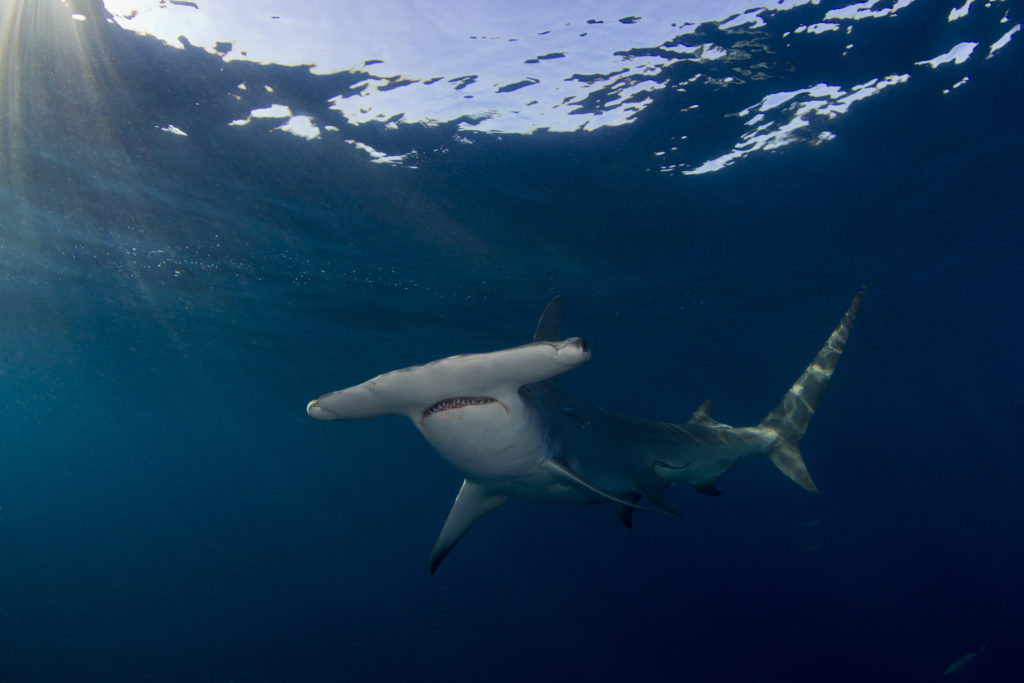
It was here that I saw my first ever great hammerhead shark; I remember staring in awe as the otherworldly, dream like creature swam past, about 7ft long in total.
On that same dive site, I saw a few more in the distance – at one point I even glimpsed three swimming side by side but the waters were so cloudy they quickly disappeared again.
You can see a glimpse of the first hammerhead I spotted at 0:51 in the video above, but the water visibility was low so check out the shutterstock picture to the left to see just how stunning they really are.
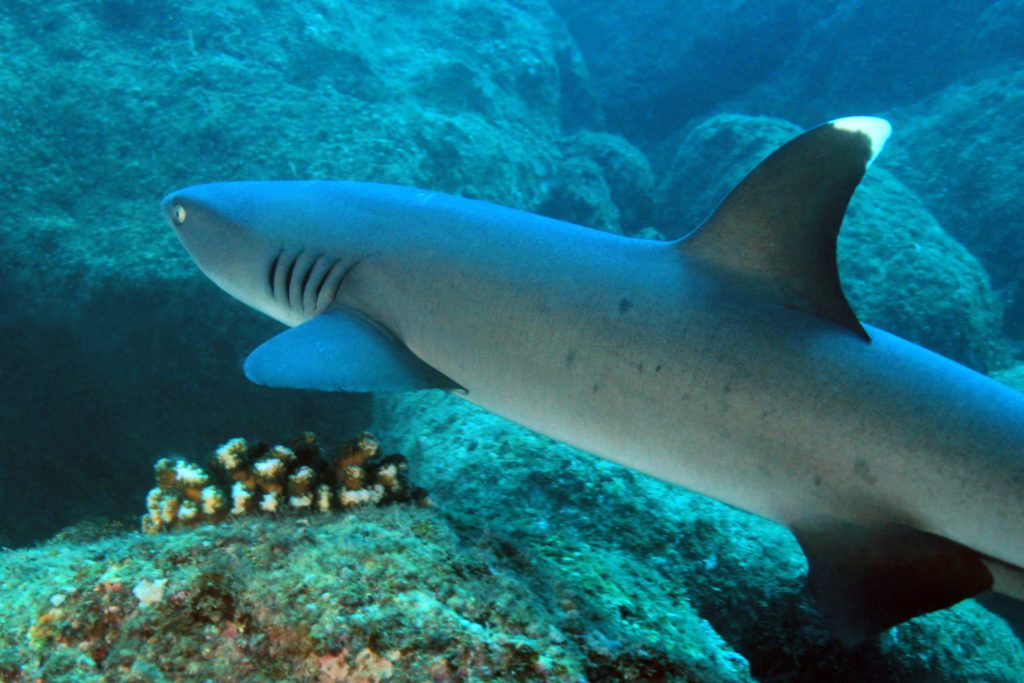
On other deep dives, we saw dozens of southern stingrays together.
Again, the water was cloudy which made the experience all the more dreamlike as they appeared out of nowhere in every direction only to be swallowed up again as quickly as they had come like underwater ghosts.
There were also plenty of whitetip reef sharks on every single dive sites and usually a turtle or two as well.
I finished the trip wiped out, but with plenty of cool new sightings and experiences as well as heaps of photos, footage and inspiration for future Diving Squad movies.
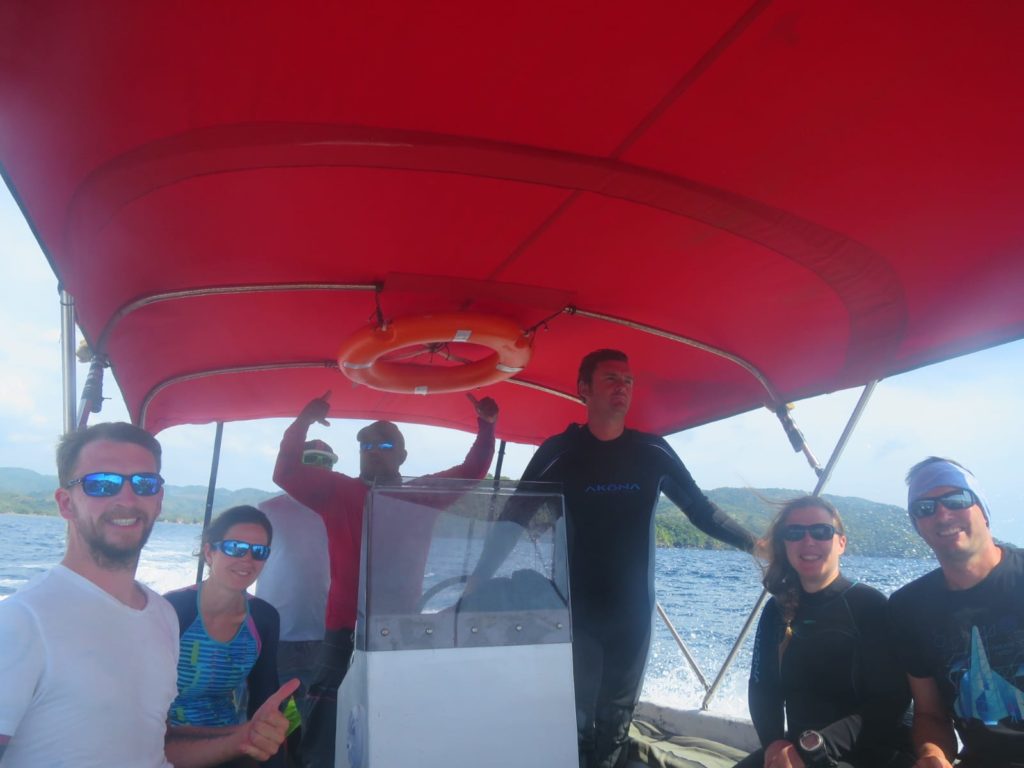
As usual, the people I met on the dive boat were all extremely interesting and fun to hang out with.
Every scuba diver, dive guide and boat crew member I’ve ever met always has an abundance of cool stories to tell and an awesomely weird personality which is another one of the reasons I love scuba diving!
Coiba Marine Park is a spectacular place to scuba dive; it’s still relatively off the grid due to it’s remoteness and the fact that few travellers make it to to Panama.
If you’re looking to discover the very bests of Central America’s Pacific Coast, Coiba Marine Park is the best place you can do it.
Picking a Dive Centre
There’s a number of very good scuba diving centres based at Santa Catalina and they all offer various dive courses and trips. The most popular purchase is half-day trips close to Coiba island, the largest of the Marine Parks 39 islands and also the largest island in Central America.
I only heard good things about any other dive centre I inquired about, however I’m extremely glad that I chose to go with Scuba Coiba as they are the only dive centre I could find that offer overnight trips with lodging at Pixvae in order to dive the marine parks northerly, more remote dive sites – which is the best way of seeing hammerhead sharks.
Scuba Coiba do this only a few times a year, usually between late April and May which coincides with the time that small schools of great hammerhead sharks can be seen.
You can check to see if Scuba Coiba have any upcoming overnight trips by clicking here – I used the very same website reserve and pay Coiba Marine Park in advance; it was a great feeling to turn up with everything already sorted.
The Scuba Coiba dive centre is easy to spot thanks to it’s bright blue colour plus the awesome painting of a whale shark on the side. To get there, just head down the main street towards the beach and just before you reach it, you’ll see the big blue building on your left hand side.
I found all of the staff to be extremely friendly and knowledgeable. The instructors there were some of the most well travelled divers I’d ever met, between them having dived much of the globe. All had fallen in love with Coiba when they’d finally got there and chosen to settle down in order to keep diving it again and again.
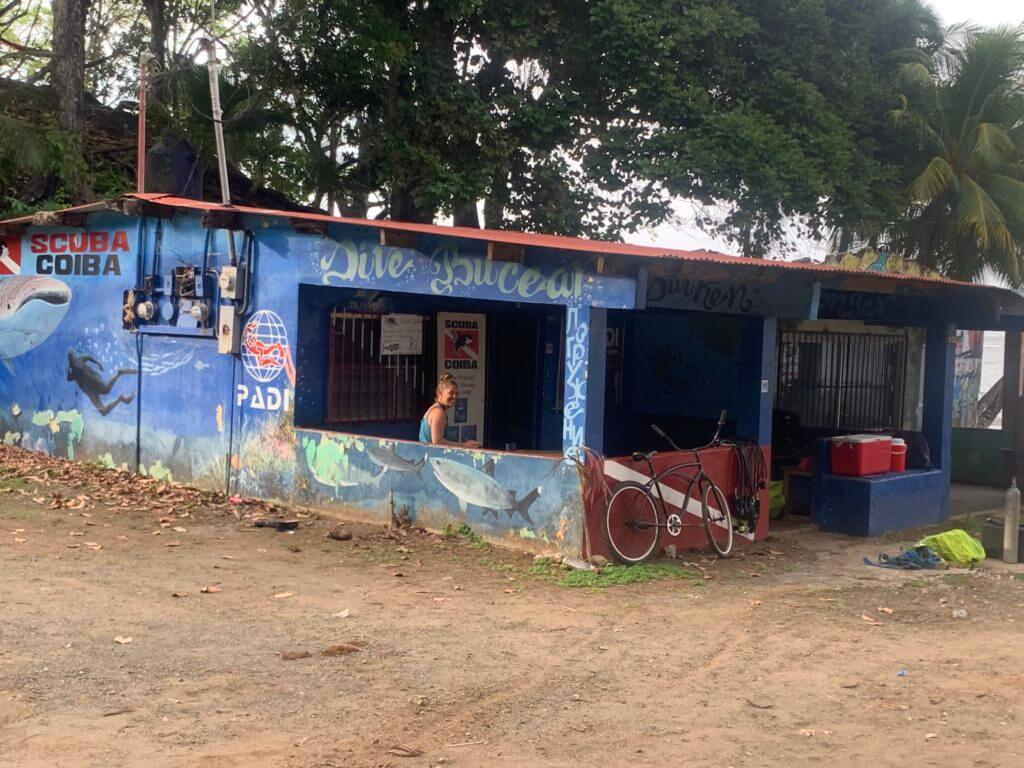
Dive Season & Conditions for Coiba
There’s a number of beginner friendly dive sites at Coiba Marine Park although most of the more impressive ones, including the northern region areas are only suitable for experienced divers due to unpredictable currents and deep waters.
Water temperature can get pretty damn cold, especially on those deeper dives, ranging from 81 to 84F (27 to 29C) but with numerous thermoclines that can plunge the temp to 60 (16C). We all dove with 5mm thick wetsuits and I’m glad we did!
Visibility appears to be highly variable at any time of year, being strongly affected not just by rain or lack of on the day, but rainfall during previous days as well as by various ocean currents.
In terms of when is the best time to dive Coiba, you can actually go all year round. However, there is a distinct Dry Season: December – May as well as a Rainy Season: June – November.
Furthermore, certain marine animals show up at different times of the year:
- January: Best time to see Whale Sharks (but no guarantee!).
- March: Best chance to see manta rays.
- April – May: Small schools of young hammerhead sharks often seen at northern dive sites. This is when I went.
- June: Start of rainy season although it can be quite hard to predict in terms of when it will begin and how long it will last.
- July – October: Humpback male mating and calving season.
- September: By this point the rainy season has fully set in. This is also the start of low season meaning less travellers.
- December: Marks the start of dry season, although again it can be hard to predict exactly when it will come about.
How to Get to Coiba National Park
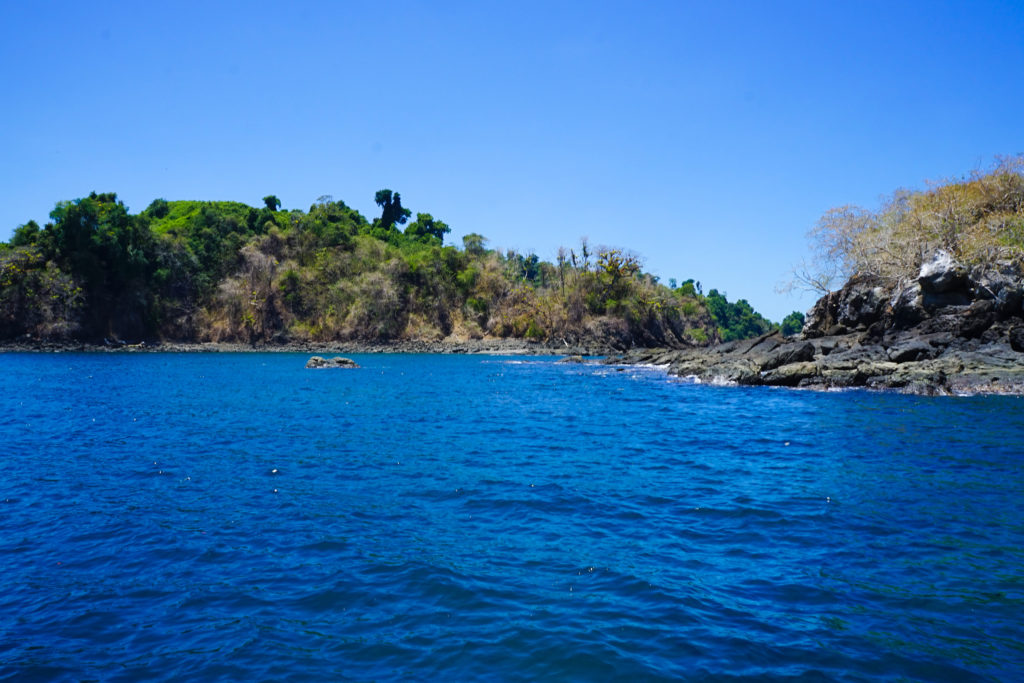
You’ll need to get to Santa Catalina and from here, your dive centre will take you to Coiba Marine Park via boat.
If you’re flying, chances are you’re coming into Panama City. From here, it’s a 5 and a half hour bus ride to Santa Catalina.
If you’re travelling by land, there’s a range of bus and/or taxi combo routes you can take to reach Santa Catalina, depending on where you’re coming from. I found the private shuttle company HelloTravelPanama extremely useful both for getting in and out of Santa Catalina.
Where to Stay at Santa Catalina, Panama
With rapidly growing tourist infrastructure, Santa Catalina already has a number of accommodation options from luxury hotels to budget backpacker hostels.
Check out some of the best accommodation at Santa Catalina, Panama here.
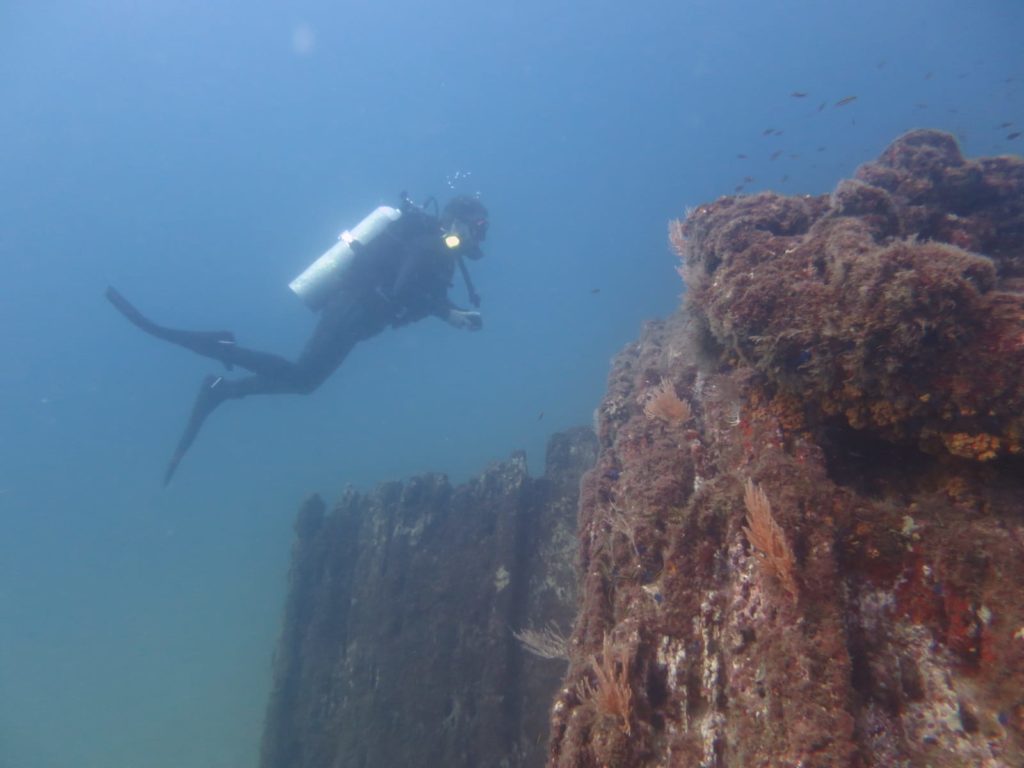
Coiba Marine Park Diving Squad DEBRIEFING:
And that’s how I dived Coiba Marine Park – and how you can to! This was one of the most memorable parts of my year diving in Central America and certainly the place where I witnessed the most big pelagic marine animals.
After I’d explored Coiba I headed straight over the Boquete mountains to the Caribbean side of Panama to dive Bocas del Toro… which was an entirely different sort of scuba diving adventure!
